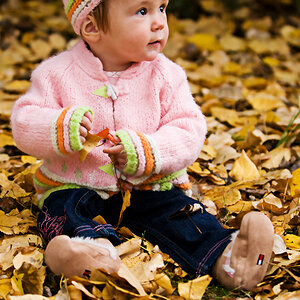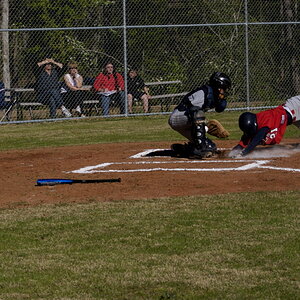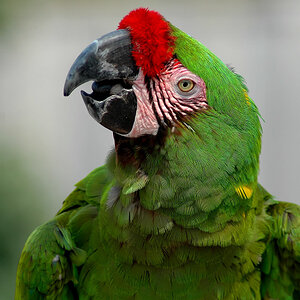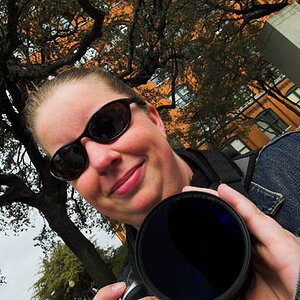John27
No longer a newbie, moving up!
- Joined
- Sep 1, 2010
- Messages
- 300
- Reaction score
- 49
- Location
- Missouri
- Can others edit my Photos
- Photos OK to edit
Hey All!
So I haven't been on this forum for a while but a couple years ago, I got my wife a Canon T1i and she has been loving it, really getting into photography as a hobby.
This Christmas I'm getting her a Canon Speedlite 480 EX II, and an EF 50mm f/1.8 II lens. She has been doing some portraits for family members and I figure maybe we could start better equipping her, I think it's a start. The speedlite is something that will be really versatile in the future too I think.
So here is my question, what are some other good things I could consider for her for branching into more portrait style photography? It definitely needs to be portable, something she can take to a family members house to help them make their Christmas cards, stuff like that. She's not a professional photog nor is she trying to be, but she definitely enjoys this hobby and the family loves having a free photographer all the time! I don't have an enormous budget left after getting the 480 EX II and 50 f/1.8 II lens, but I am curious as to what you all thought would be some good tools for her in the future? I was considering a portable background or green screen, something she can throw in the backsteat of her car. And possibly a stand and umbrella for her speedlite? (Would that even matter with having just one speedlite?) I'm also interested in what you all think might be good literature to go with all of this to help us (mostly her but I enjoy learning it along with her, and doing some shooting myself) learn about all of this stuff?
Again, not looking to build a studio, but maybe some better lighting supplies that can be thrown in the trunk and carried to a relatives house is the ideal setup here. Any ideas?
We have Lightroom 4, Photoshop CS6 (Got a GREAT deal through a photoshop class she took at the local community college), a T1i and as I said, she'll be getting a 480 EX II and 50mm f/1.8 II (but SHH! Don't tell her!), she also has the kit lens (18-55 IS) and a 75-300 f/4-5.6 III
Thanks all!
So I haven't been on this forum for a while but a couple years ago, I got my wife a Canon T1i and she has been loving it, really getting into photography as a hobby.
This Christmas I'm getting her a Canon Speedlite 480 EX II, and an EF 50mm f/1.8 II lens. She has been doing some portraits for family members and I figure maybe we could start better equipping her, I think it's a start. The speedlite is something that will be really versatile in the future too I think.
So here is my question, what are some other good things I could consider for her for branching into more portrait style photography? It definitely needs to be portable, something she can take to a family members house to help them make their Christmas cards, stuff like that. She's not a professional photog nor is she trying to be, but she definitely enjoys this hobby and the family loves having a free photographer all the time! I don't have an enormous budget left after getting the 480 EX II and 50 f/1.8 II lens, but I am curious as to what you all thought would be some good tools for her in the future? I was considering a portable background or green screen, something she can throw in the backsteat of her car. And possibly a stand and umbrella for her speedlite? (Would that even matter with having just one speedlite?) I'm also interested in what you all think might be good literature to go with all of this to help us (mostly her but I enjoy learning it along with her, and doing some shooting myself) learn about all of this stuff?
Again, not looking to build a studio, but maybe some better lighting supplies that can be thrown in the trunk and carried to a relatives house is the ideal setup here. Any ideas?
We have Lightroom 4, Photoshop CS6 (Got a GREAT deal through a photoshop class she took at the local community college), a T1i and as I said, she'll be getting a 480 EX II and 50mm f/1.8 II (but SHH! Don't tell her!), she also has the kit lens (18-55 IS) and a 75-300 f/4-5.6 III
Thanks all!


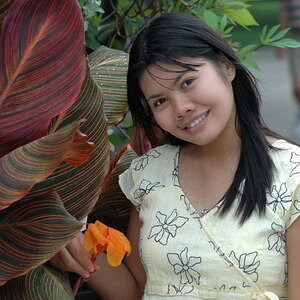
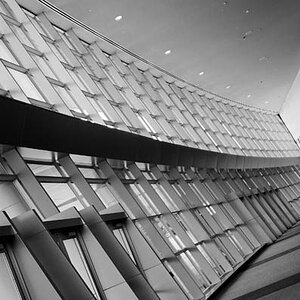

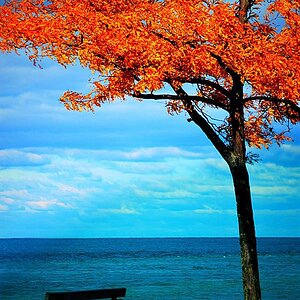
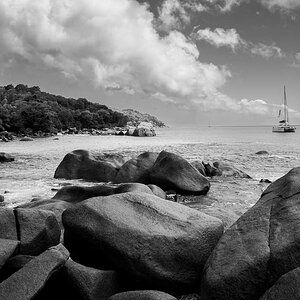
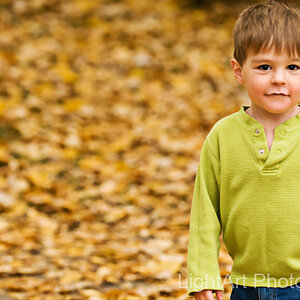
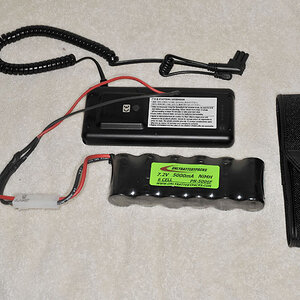
![[No title]](/data/xfmg/thumbnail/36/36650-edd8c21212fe9fbd7e59bfb08cdc91ea.jpg?1619737672)
